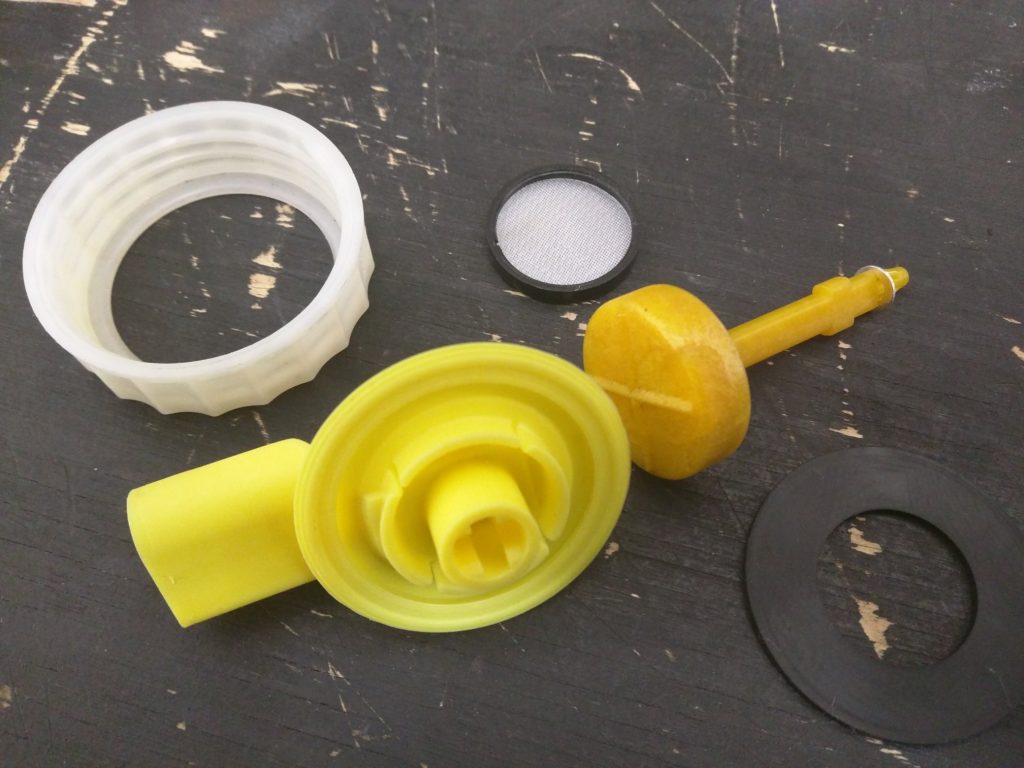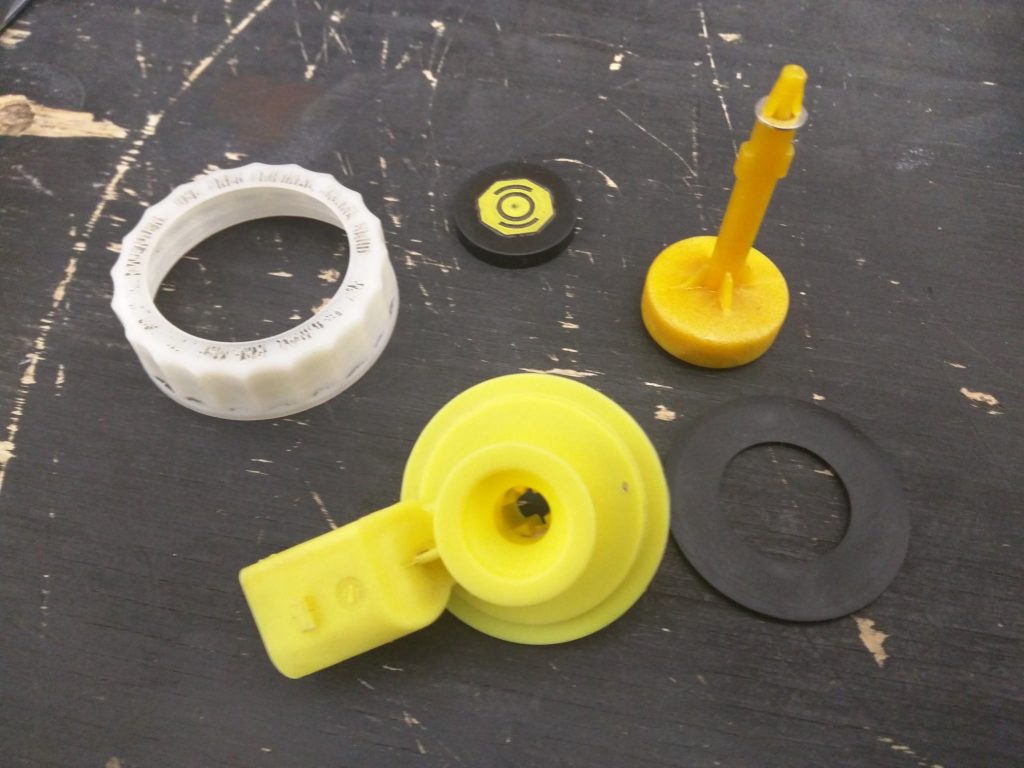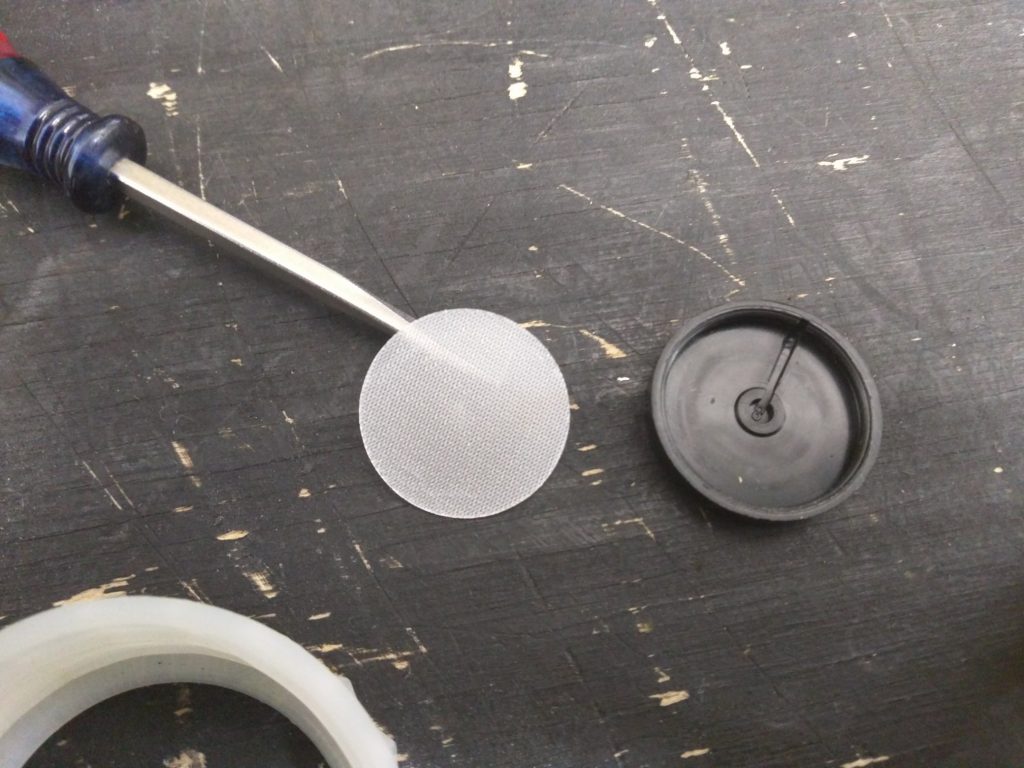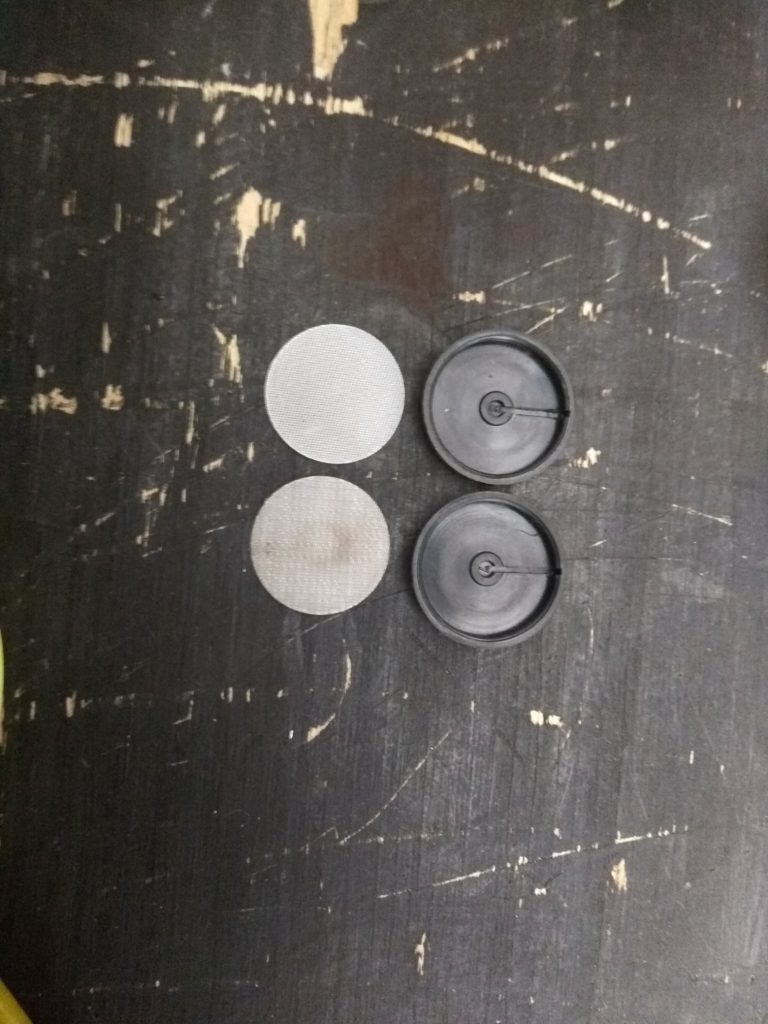Brake fluid. Water gets into brake fluid in just about every automobile because glycol ether is hygroscopic. Hygroscopic was a brand-new word to me when I attended automotive classes and its etymology is not clear, but it simply means that it absorbs water out of the atmosphere. (I would have expected a word like hydrophilic, but no. And glycol ether is not the only type of brake fluid, but it is by far the most common.)
Here’s the gist: I’m recommending putting a plastic bag over your brake master cylinder/reservoir to prevent water from sitting on tip of it.
And here’s a bunch of explanation that you may decide is too long to read, but there are pictures at the end:
As you press the brake pedal in a car the brake pedal lever presses on a hydraulic cylinder (the master cylinder) that transmits pressure and a tiny volume of brake fluid to actuate the brake calipers and/or wheel cylinders. The brake fluid reservoir sits right on top of the master cylinder so there is always plenty of fluid even as the brake pads wear thin and space behind the caliper pistons expands. So when the pedal is pressed and released the level in the reservoir changes minutely. Air is drawn in and pushed back out. It’s like the reservoir is taking very shallow breaths with every press of the pedal. (The exceptions I’m familiar with are the Toyota Hybrids. They use a brake stroke simulator so you get the same feel of pressing the brake pedal when actually regenerative braking. So the tiny volume of brake fluid flow really only happens in the closed (not exposed to air) cylinder of the stroke simulator– I don’t think the reservoir breathes at all.)
So the brake fluid is constantly circulating its atmosphere and absorbing the water out of it, but that process is very slow. Brake fluid that is contaminated with water is bad for 2 reasons: The boiling point of the brake fluid is lower; so if you are braking very hard and really heating up your pads and rotors (you’d have to be racing or driving straight down a mountain), that heat transfers to the fluid, the fluid changes phase into a gas, the gas is compressible unlike the liquid state, and you experience brake fade– the brake pedal sinks and the brakes apply less force. The second reason water in brake fluid is bad is corrosion. The master cylinder and slave cylinders all rely on rubber seals that mate against polished metal surfaces to contain the hydraulic pressure without leakage. If those metal surfaces corrode then the next time you replace brake pads and push the pistons back they may leak and then you’d have to buy new calipers. In a worse scenario, the master cylinder corrodes and the fluid bypasses a seal. The result may be sitting at a stop light with your foot on the brake, and the brake pedal sinks to the floor. and the brakes don’t hold Or it could be much worse.
Your mechanic sticks a probe into your brake fluid reservoir to determine the moisture content. (I think it just measures conductivity and indicates the result with green, yellow and red lights– you know, for mechanics.) I wasn’t surprised to find most of the Thinks with high moisture. In fact, I was a little bit surprised to see that some Thinks actually had brake fluid that was in good condition. The max fill line on the brake fluid reservoir is pretty close to the top already, but a few Thinks seemed to be a bit overfull and with some additional discoloration. (This type of brake fluid (DOT 3 and DOT 4) is required to be amber-colored, but depending on the brand, fresh brake fluid can vary from nearly clear to fairly dark.)
I will also occasionally see evidence of brake fluid having leaked down the brake booster (the dinner plate-sized diameter black chamber onto which the master cylinder is mounted). Another important thing to know about brake fluid is that it will ruin paint if not cleaned off shortly after contact. It causes the paint to bubble up and flake off. (Maybe the most important thing to know about brake fluid is that it has a different effect on rubber than other mineral-based oil products. So if you put anything other than brake fluid into your brake system the rubber seals will swell up and cause all your brakes to bind up. Then you have to replace your entire brake system, which may mean that the car is a total loss.)
I think that most occasions of contaminated brake fluid and other problems could be attributed to water dripping from the windshield above and pooling right on top of the brake fluid reservoir. So now, instead of the reservoir taking very shallow breaths of moisture-laden air, it’s actually inhaling liquid water. Below are some images of the reservoir cap and the flow path that I believe is allowing water to contaminate the brake fluid.
The cap includes a circuit to warn you if the brake fluid drops below a safe level. The float with a washer on top is normally held up against the black cap by buoyant force. If there is a brake fluid leak, the float will drop down until the washer closes the warning circuit.
A closer examination of the tiny black cap shows a fine mesh filter and a pathway for air flow. A comparison of 2 filters shows one clean and one that has probably been corroded by water.
I wish I had a better, more reliable, more professional solution to this problem, but after long consideration, I think that a gallon-sized plastic bag held in place with either a zip tie or a rubber band is probably a pretty good way to prevent brake fluid becoming unnecessarily contaminated. It will be my standard practice from now on unless anyone can give me a good reason why I shouldn’t. (And there might be– I just can’t think of one.)




